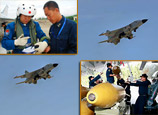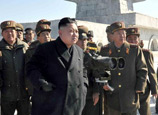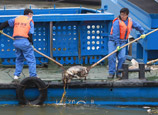
Delegates from business sectors discuss the new conception of 'world factory'
You can hire 1.5 workers in Thailand, 2.5 in Philippines or 3.5 in Indonesia for the same price than one in China.
The advantages of low-cost labor force of China no longer exist. Countries in Southeast Asia are ambitious to substitute China as the world factory. Meanwhile, developed counties like United State are advocating reviving manufacture industry and reindustrialization.
The almost 30 years of smoothly developing manufacture industry of China is facing competitions from both high-end technology and low-end cost.
An article published on the Wall Street Journal in January this year said China is losing the position as the world factory, and manufacturers have relocated their businesses in lower cost regions in Southeast Asia.
Is China losing the status of 'world factory'? How could China's manufacturing industry cope with the price war?
Low cost is ending
"China's advantages in globalization and international industrial transfer, and especially the advantage of low cost labor force are reducing", said Pei Changhong, a member of Chinese People's Political Consecutive Conference (CPPCC) and director of Economy Institute under Chinese Academy of Social Science.
Pei said that except the increase of labor cost, the land source cost has still risen. The price of land in main monitored cities is 3,049 yuan per square meter, 2.4 times of that in 2005. (6.28 yuan against the U.S. dollar)
China has not been the most low-cost product manufacturing base in the world. Pei said in 2000, 40 percent of Nike shoes in the world were made in China, 13 percent in Vietnam. In 2009, both China and Vietnam accounted for 36 percent of the Nike shoes’ manufacturing proportion. In 2010, Vietnam has taken the lead as Nike’s largest manufacturing country.
According to a world investment report released by United Nations in 2012, the foreign direct investment flowing into Southeast Asia reached 117 billion U.S. dollars, increasing 26 percent year-on-year. But in China it only increased 8 percent at the same period.
Information from China's Ministry of Commence revealed that China's foreign direct investment in 2012 decreased 3.7 percent to 112 billion U.S. dollars, which is the first reduction since the international finance crisis in 2009. Foreign direct investment in Thailand increased 63 percent in 2012, and 27 percent in Indonesia in the first nine months.
If China does not have the advantage of traditional low-cost labor force, what are China's advantages to maintain the world factory position?
Three advantages to support China as world factory
Pei thought that China's world factory position will not change in the next 10 years.
"China's world factory position has not been weakened, said Wang Zhile", researcher from International Trade And Economic Cooperation Research Institute under the Ministry of Commence, "three advantages of China’s manufacturing industry will not change".
First, Wang said, China is an extending market. In 2012, total retail sales of social consumer goods surpassed 20 trillion yuan in 2012, compared to the 10 trillion yuan in 2008. The number has been doubled in only five years, which is incredible nowadays.
Second, the quality of Chinese labor force has obviously improved in recent years. The cost of Chinese labor force is competitive in the global market. Although the manufacturing industry is transferring to the Southeast countries, the firstly transferred industries are related to labor concentrated industry, such as shoemaking, clothing, etc. Wang said he learnt from many large scale multinational corporations that they prefer to expand investment in China in future.
Third, China has a reliable supply chain. China has built an industry support system with a relative advantage in the world, which does not exist in countries from the Association of Southeast Asian Nations like Vietnam.
Edited and translated by Ma Xi, People's Daily Online
Read the Chinese version: 中国“世界工厂”地位10年内不会动摇
Source: People's Daily Online- China Economic Weekly
















 When women earn bread, men are leftover
When women earn bread, men are leftover


![]()
